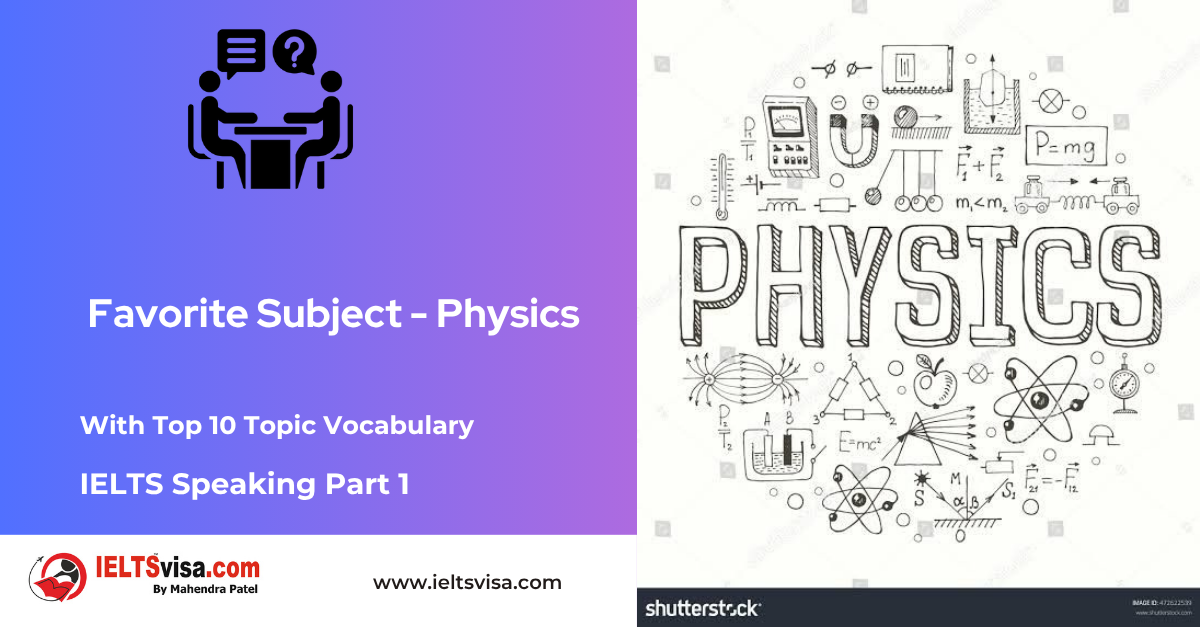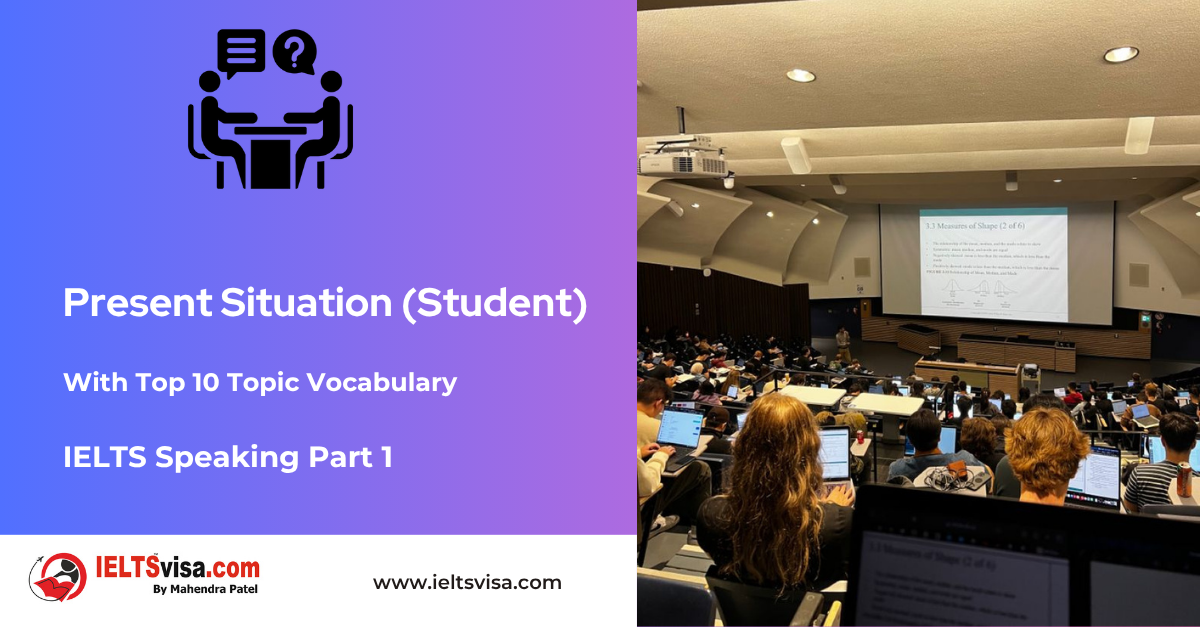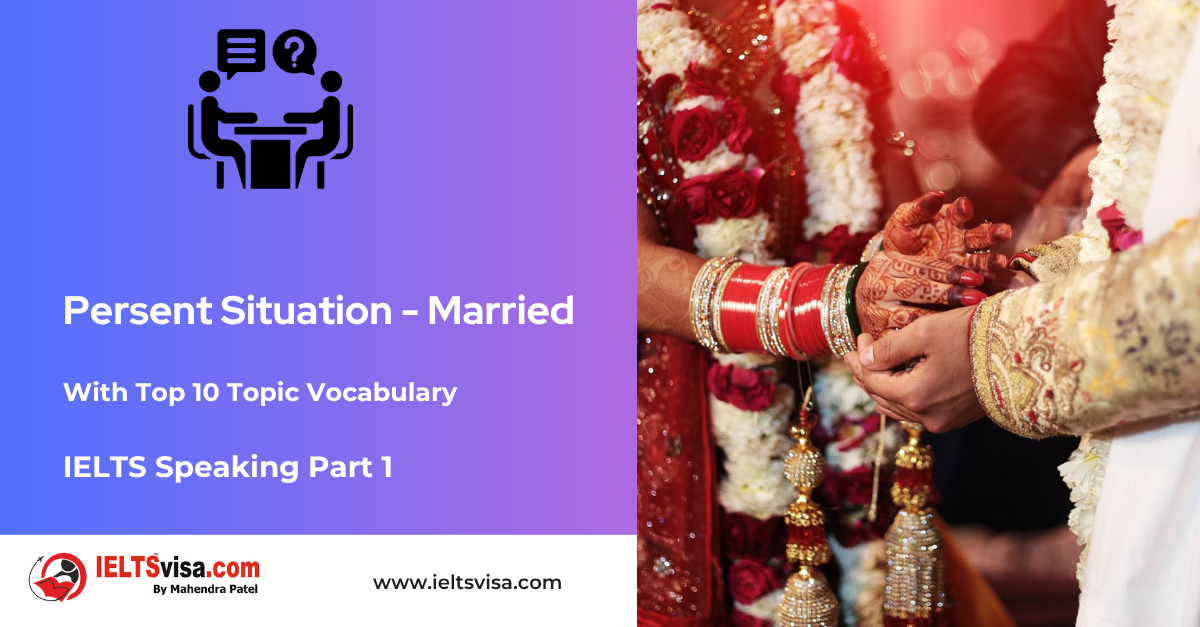Antonyms
Grammar for IELTS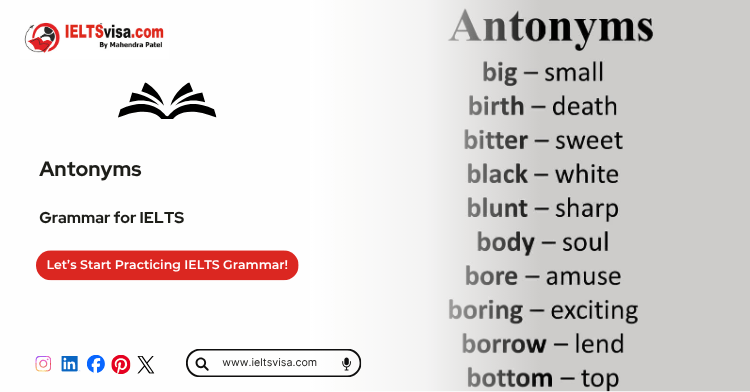
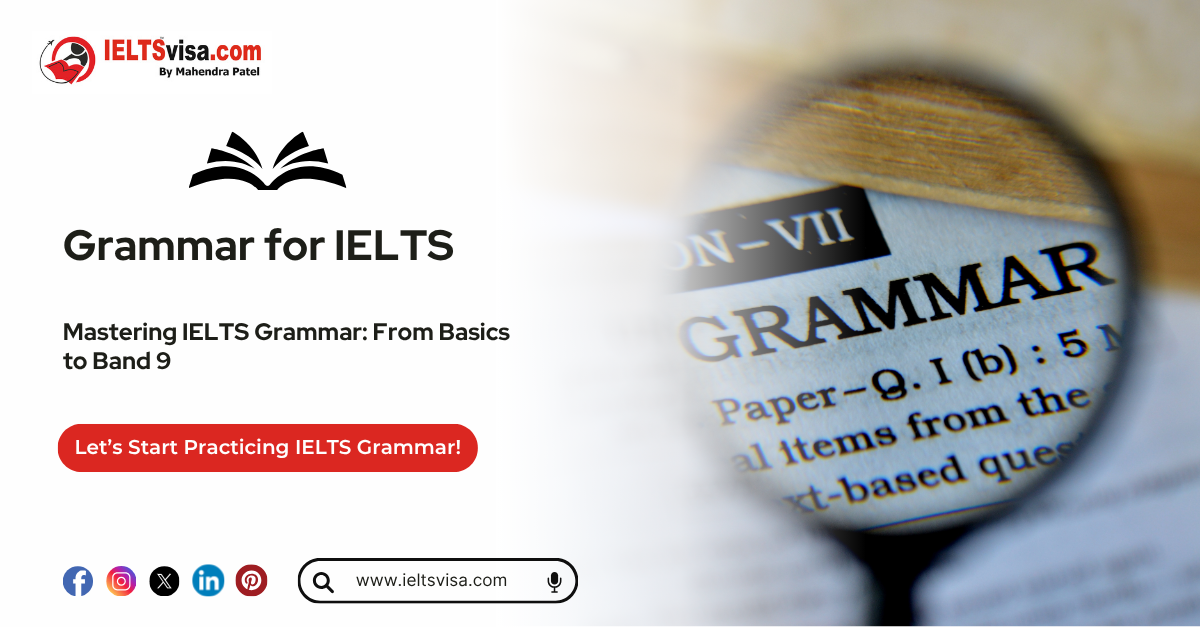
Antonyms
Antonyms are an essential part of learning English. They help us express opposites and improve our vocabulary by showing contrast. In this guide, we will explain what antonyms are, how they function, and provide examples to help you understand and use them effectively. This article is ideal for beginners, young learners, and anyone seeking to enhance their English skills.
What Is an Antonym?
An antonym is a word that has the opposite meaning of another word. For example:
-
- Hot is the antonym of cold.
- Happy is the antonym of sad.
Antonyms exist in every part of speech:
-
- Nouns: victory and defeat
- Verbs: rise and fall
- Adjectives: strong and weak
- Adverbs: quickly and slowly
Learning antonyms helps you express yourself clearly and adds variety to your language.
Antonyms vs. Synonyms
While antonyms are words with opposite meanings, synonyms are words with similar meanings. Let’s look at an example:
|
Word |
Synonym |
Antonym |
|
Big |
Large |
Small |
|
Happy |
Joyful |
Sad |
Antonyms and synonyms are equally important when expanding your vocabulary.
Types of Antonyms
There are three main types of antonyms:
1. Complementary Antonyms
These are pairs of words where one is the complete opposite of the other. If one is true, the other cannot be true.
Examples:
-
- Alive and dead
- On and off
- Right and wrong
2. Gradable Antonyms
These antonyms represent a spectrum or scale. The words are opposites, but there are degrees between them.
Examples:
-
- Hot and cold (it can also be warm or cool)
- Fast and slow (a pace can be moderate)
- Big and small (something can be medium-sized)
3. Relational Antonyms
These words describe pairs where one implies the existence of the other. For example, a teacher cannot exist without a student.
Examples:
-
- Buy and sell
- Parent and child
- Give and receive
How Antonyms Improve Your English
Antonyms are more than just words—they’re tools that can make your language richer and more expressive. Here are three key ways they help:
1. Comparing and Contrasting
Antonyms help highlight differences between two ideas.
Examples:
-
- Life in the city is busy, while life in the countryside is peaceful.
2. Describing Effectively
Using antonyms can enhance descriptions by showing what something is not.
Examples:
-
- Instead of saying “It’s small,” you can say, “It’s not big,” which adds variety to your language.
3. Creating Impact with Antithesis
Antonyms are often used in literature and speeches to create contrast and make a statement more powerful.
Examples:
-
- “It’s not about the size of the dog in the fight, but the fight in the dog.”
Prefixes That Form Antonyms
In English, prefixes are often used to create antonyms by adding “not” or “opposite” to the base word. Here are some common prefixes:
|
Prefix |
Word |
Antonym |
|
un- |
Known |
Unknown |
|
in- |
Correct |
Incorrect |
|
dis- |
Agree |
Disagree |
|
mis- |
Understand |
Misunderstand |
|
im- |
Possible |
Impossible |
Examples of Antonyms in Sentences
1. Bright and Dark:
-
- The room is bright in the morning.
- The room becomes dark at night.
2. Easy and Difficult:
-
- The math problem was easy for me.
- It was difficult for my friend.
3. Young and Old:
-
- The young boy ran quickly.
- The old man walked slowly.
Practice Exercises
Here’s a fun way to test your understanding of antonyms. Match the words with their opposites:
1. Happy – _____
2. Strong – _____
3. Begin – _____
4. Full – _____
5. Big – _____
Answers:
1. Happy – Sad
2. Strong – Weak
3. Begin – End
4. Full – Empty
5. Big – Small
Frequently Asked Questions About Antonyms
Q1. What is an antonym?
An antonym is a word that has the opposite meaning of another word. For example, “hot” is the antonym of “cold.”
Q2. What are the types of antonyms?
The three main types of antonyms are:
- Complementary Antonyms: Complete opposites, like alive and dead.
- Gradable Antonyms: Opposite ends of a spectrum, like hot and cold.
- Relational Antonyms: Words in opposite roles, like buy and sell.
Q3. Why are antonyms important?
Antonyms help improve vocabulary, make writing more interesting, and enhance comparisons.
Q4. How do prefixes create antonyms?
Prefixes like un-, in-, and dis- can turn a word into its opposite. For example:
- Known → Unknown
- Agree → Disagree

Our Books
Master IELTS Speaking Part 1
IELTS Writing Task 1 Book
IELTS Writing Task 2 Book
Practice IELTS Other Modules
IELTS Listening
The IELTS Listening test assesses how well you can understand spoken English in various contexts. It lasts about 30 minutes and is divided into four sections with a total of 40 questions. The listening tasks become increasingly difficult as the test progresses.
IELTS Academic Reading
The IELTS Academic Reading section assesses your ability to understand and interpret a variety of texts in academic settings. It is designed to evaluate a range of reading skills, including skimming for gist, reading for main ideas, reading for detail, understanding inferences, and recognizing a writer's opinions and arguments.
IELTS Speaking
The IELTS Speaking test assesses your ability to communicate in English on everyday topics. It lasts 11-14 minutes and consists of three parts: introduction, cue card, and a discussion based on the cue card topic.
IELTS General Reading
IELTS General Reading tests your ability to understand and interpret various types of texts. Here are some key areas and types of content you can expect to encounter in the reading section, along with tips for effective preparation.
IELTS Academic Writing Task 1
In IELTS Academic Writing Task 1, you are presented with a visual representation of information, such as graphs, charts, tables, or diagrams, and you are required to summarize, compare, or explain the data in your own words.
IELTS General Writing Task 1
In IELTS General Writing Task 1, you are required to write a letter based on a given situation. The letter can be formal, semi-formal, or informal, depending on the prompt. Here’s a breakdown of the key components to include in your letter
IELTS Academic Writing Task 2
In IELTS Academic Writing Task 2, you are required to write an essay in response to a question or topic. Here’s a guide to help you understand the essential elements of this task
IELTS Exam Tips
To succeed in the IELTS exam, practice regularly, familiarize yourself with the test format, improve your vocabulary, develop time management skills, and take mock tests to build confidence.
Grammer for IELTS
Grammar is the foundation of effective communication in English. Understanding tense usage, subject-verb agreement, and sentence structure enhances clarity and coherence in writing and speaking.
Vocabulary for IELTS
Vocabulary plays a crucial role in the IELTS (International English Language Testing System) exam, especially in the Speaking and Writing sections. Here’s an overview of why vocabulary is important and how it impacts your performance
RECENT IELTS SAMPLES QUESTIONS AND ANSWERS
IELTS Speaking Part 1 – Favourite Sujbect – Physics
IELTS Speaking Part 1 - Favourite Sujbect - Physics Q: What is your favourite subject? A: My favourite subject...
IELTS Speaking Part 1 – Present Situation (Student)
IELTS Speaking Part 1 - Present Situation (Student) Q1: Are you a student or do you work?A: I’m a full-time...
IELTS Speaking Part 1 – Present Situation – Employee – as an International Student and Social Worker
IELTS Speaking Part 1 - Present Situation - Employee - as an International Student and Social Worker Q1: Are...
IELTS Speaking Part 1 – Persent Situation – Employee- as an Electric Engineer
IELTS Speaking Part 1 - Persent Situation - Employee- as an Electric Engineer Q1: What do you do for a...
IELTS Speaking Part 1 – Persent Situation – Employee – as an Software Engineer
IELTS Speaking Part 1 - Persent Situation - Employee - as an Software Engineer Q1: What do you do for a...
IELTS Speaking Part 1 – Persent Situation – Married
IELTS Speaking Part 1 - Persent Situation - Married Q1: Are you married?A: Yes, I am married. My spouse and I...

